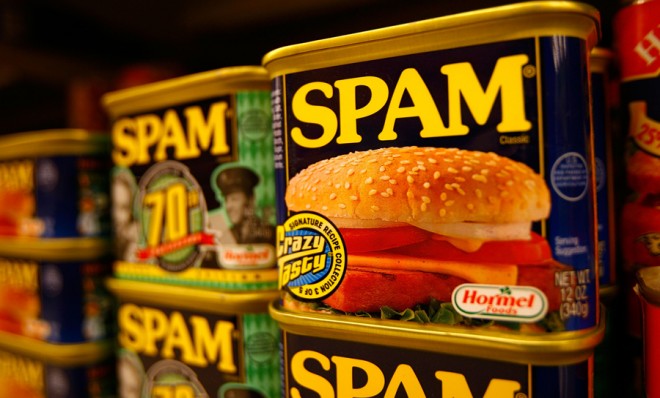4 delicious foods we'll be able to eat on Mars
Hope you like Spam

After nearly four months spent isolated from the rest of humanity, six volunteers this week rubbed their eyes and emerged from a small dome located in the middle of a barren lava field in Hawaii.
They were participating in an experiment intended to simulate what life in outer space could be like if mankind ever made it to Mars, with a goal of answering one all-important question: What will we eat up there? (Related: Why do astronauts crave spicy food?)
For this study, researchers from the University of Hawaii and Cornell University had the participants whip up a variety of dishes from a long list of non-perishable and dehydrated food items. Iron Chef, but on a much lonelier scale. The NASA-funded Hi-SEAS crew, as the participants were called, were even emailed recipe ideas via a contest held on the mission's website.
The Week
Escape your echo chamber. Get the facts behind the news, plus analysis from multiple perspectives.

Sign up for The Week's Free Newsletters
From our morning news briefing to a weekly Good News Newsletter, get the best of The Week delivered directly to your inbox.
From our morning news briefing to a weekly Good News Newsletter, get the best of The Week delivered directly to your inbox.
All in all, a ticket to Mars doesn't sound so bad, as long as you're capable of suppressing your inner foodie and subsisting off processed delicacies like freeze-dried meat and dehydrated fruit pieces. Here, in no special order, are a few of the better-sounding things the participants were able to eat:
1. Spam
Ah, Spam. The gelatinous hodgepodge of chopped pork shoulder, salt, water, and potato starch has long been a Hawaiian staple. First introduced in 1937, the ingredient was selected by NASA because of its long shelf life. Researchers in this case used it as a mealtime centerpiece for dishes like Cajun jambalaya, Spam fried rice, and even Spam musubi. (Which, for the uninitiated, is fried spam and sushi rice wrapped in seaweed. And yes, it's delicious.)
2. Nutella
A free daily email with the biggest news stories of the day – and the best features from TheWeek.com
The chocolate hazelnut spread beloved by both Columbia students and criminals alike is among the more notable foodstuffs afforded to the would-be astronauts. Curiously, Nutella didn't appear as an ingredient in any of the Hi-SEAS crews' favorite dessert recipes, which leads us to believe they ate the stuff right out of the jar.
3. Quinoa
Since 2006, the popularity (and price) of the maybe-evil "miracle food" has soared stateside. The whole grain packs a formidable nutritional punch, with unusually high protein content and, unlike many of the non-perishables brought aboard spaceships, a 20 percent daily dose of fiber. Fun fact: Quinoa is also a great stand-in for pasta in mac and cheese.
4. Egg crystals
Add water, and the evaporated egg particles balloon into a fluffy, close-enough approximation of their shelled brethren. The team seemed to love using them, too: The top three user-submitted breakfast entries as chosen by the crew were a no-crust quiche muffin, a Spam & egg baowich, and pancakes.
-
 Antibiotic resistance: the hidden danger on Ukraine’s frontlines
Antibiotic resistance: the hidden danger on Ukraine’s frontlinesUnder The Radar Threat is spreading beyond war zones to the ‘doorstep’ of western Europe
-
 ‘Capitalism: A Global History’ by Sven Beckert and ‘American Canto’ by Olivia Nuzzi
‘Capitalism: A Global History’ by Sven Beckert and ‘American Canto’ by Olivia NuzziFeature A consummate history of capitalism and a memoir from the journalist who fell in love with RFK Jr.
-
 Who will the new limits on student loans affect?
Who will the new limits on student loans affect?The Explainer The Trump administration is imposing new limits for federal student loans starting on July 1, 2026